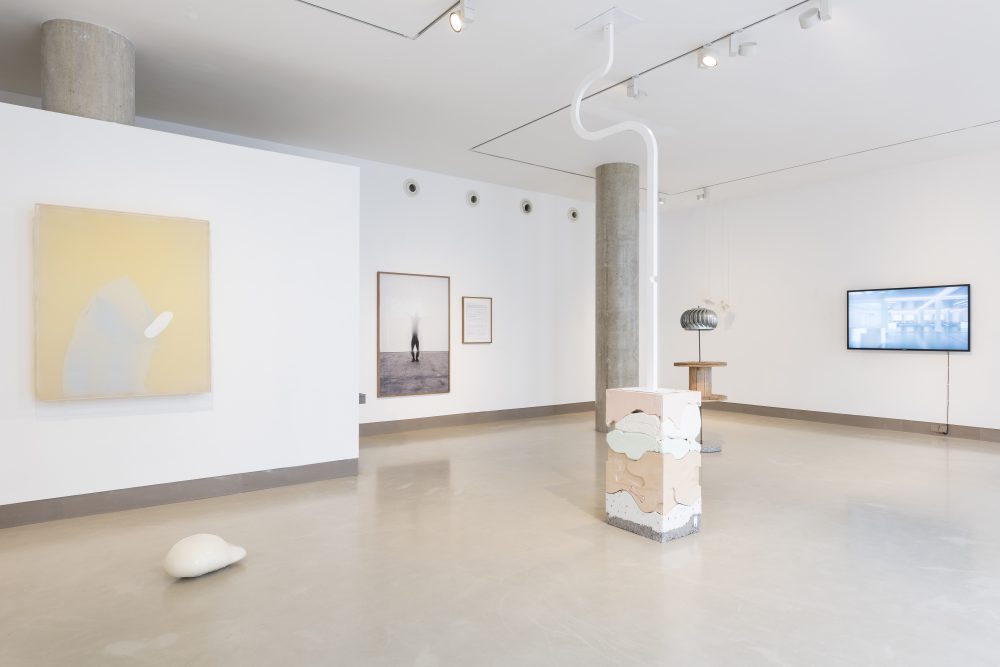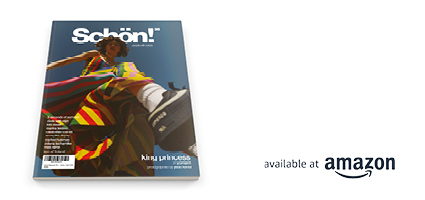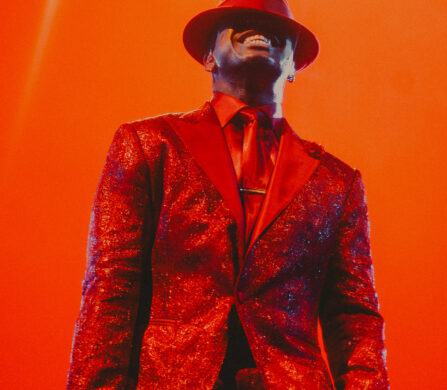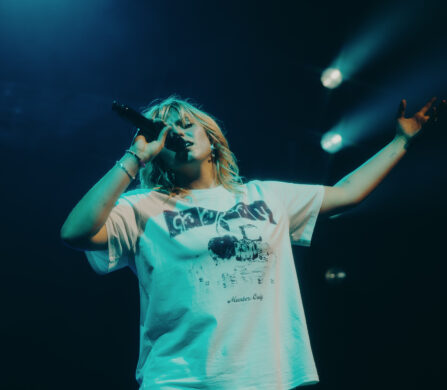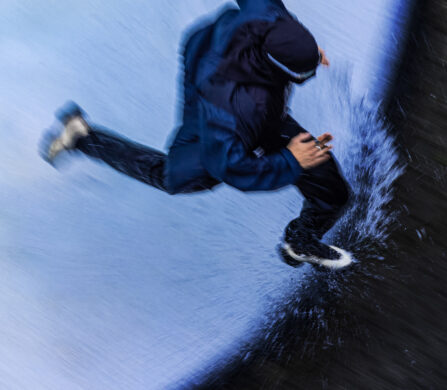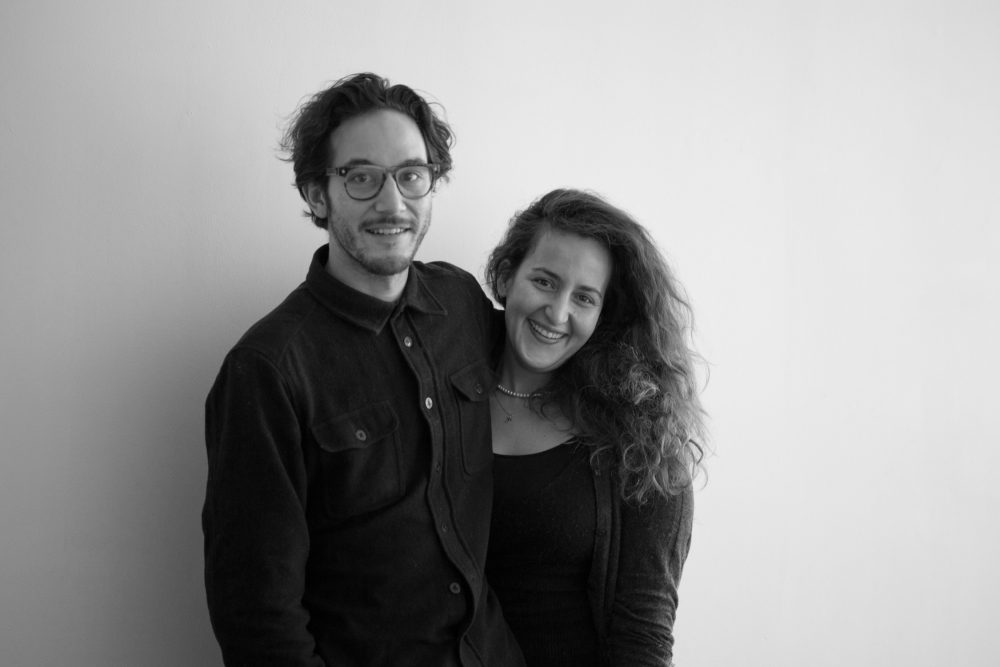
Photography / Jessica Warren
Virgile Ittah and Kai Yoda – better known as Ittah Yoda – are two individuals with unique visions, united by an excitement and curiosity for creation. Having initially met at the Royal College of Art – where Ittah studied sculpture and Yoda photography – the pair now reside in South London, producing subtle assemblages which, arranged over walls, the floor or suspended from the ceiling, seem to defy gravity. Their practice represents the dissolution of the artist’s ego, not only by creating works as a duo, but also by placing utmost emphasis on the experience of the viewer. Their shows are abound with surprises and interactive elements, which deny their audience any sense of stability, and reflect the nature of a world permanently in flux. Always pushing the boundaries of artistic creation, Ittah Yoda are looking to new and exciting methods, incorporating technology and innovative materials to cater to the limits of their audience’s imagination.
How has the fusion of your divergent cultural backgrounds (Yoda is originally from Tokyo, and Ittah from Paris) influenced the appearance of your work?
Historically and geographically, our cultural backgrounds are very different from one another. As a result, our work may be perceived by the public as coming from nowhere (or everywhere) with no specific cultural visual identity. Our work provokes confusion in the mind of the viewer through the disappearance of boundaries. We like to play with identity through constant instability in matter, colour, and shape. It’s a lot about letting go, losing control, forgetting preconceived ideas, historical affirmations, and accepting a new beginning.
How would you describe your dynamic as two individual artists creating work together, and does the collaborative process play out?
Our dynamic can be perceived in our work; it feels as though two forces attracting and repelling each other in order to gain a peaceful, silent balance. Confrontation, critique, and opposition of ideas are constant in the process of our collaboration. There is a continuous process of learning through collaboration in order to abandon the ego for the benefit of a collective idea. The only time we agree is when feel that the work is finished, which is very fortunate, because without that it would be impossible to work together.
Computer software is now like a third person in our collaborative. Machines, like human beings, make errors. We wonder when machines with deeper learning will start machines, and whether there will still be errors. With the Internet and A.I. technology, we may soon go beyond our individual bodies, and be bodiless. Maybe that will feel like freedom.
Your art blurs the boundary between sculpture, installation and painting. How would you define your artworks?
In the last decade, boundaries between art departments have been dissolving. We feel our work is a prolongation of this, and that claiming to belong to one unique aspect no longer makes sense.
We are more interested in the experience of the viewer, with our artworks as an active medium, constantly communicating with the public.
We like to make three-dimensional things because that’s how we experience the world, and we like to learn from our own experience of the work. Sometimes it is very strange; it’s as though the work belongs to either of us. It has its own life.
You use a wide range of materials, from metal, marble, wax and silicone. What’s the significance behind this?
We are interested in using new materials and processes in our practice such as silicone, photochromic pigment, carbon, and 3D printing, CNC process, and A.I. This allows us to create a new form of visual and material identity where the viewer can experience new feelings through the different senses of sight and touch.
In using these new types of process and material, we feel our work is closer to organic systems. For instance, the shapes of our work are rounder and welcoming. Silicone is recurrent in our work: it’s a material which is used medically when inserted into the human body. We feel very close to Animist philosophy where humans are part of a whole, and believe that humans can be associated freely to new material and technology without being threatened.
We like to mix various materials together because we like to be surprised and feel uncertain about the work. We also use materials in ways that contradict the purpose of their design. For example, silicone is normally used for making a mould of something, but we use it as a final piece. It’s a lot of trial and error, and often the error leads to a new work or becomes the final piece instead of the initial plan we had.
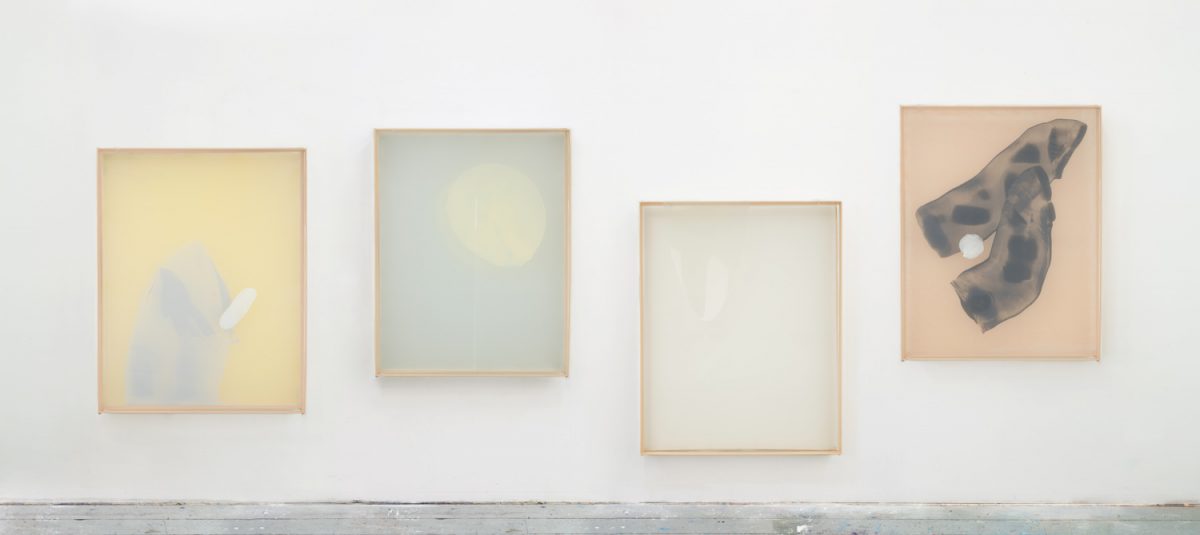
I think mango you say salmon #II
sport mesh fabric, polyester fabric, nylon fabric, silk fabric, gel transfer medium, acrylic, powder coated aluminium, silicone
135 x 107 x 17 cm, 2015
What impact do you think studying and living in London has had on your work?
London has been a great influence, in seeing how people of different cultural backgrounds and different opinion and ideas can co-exist. London has been very generous to us, and it has given us the time to think about what we really want to do – we also met each other in London. There is so much energy, and when you are ready, there is always something to bounce off.
What are the key themes or idea you’d like viewers to take away from your latest show, I think mango you say salmon?
The viewer is free to take away anything they’d like, to create their own feelings, and to be surprised by new experiences through our work. We’d like to develop some of ideas in I think mango you say salmon, such as the two loungers we installed for the public to lie on. These types of works change the physical and psychological perception of the viewer.
Being honest with ourselves is most important. Our tutor told us to “never underestimate the viewer”: we like to remember this.
How did you arrive at the pastel colour scheme for the works for group show Lightness? Does it carry any symbolic value?
Earlier on, we were only using a variation from white to black and transparent. We started to develop the use of pastel colours following a trip to Bucharest, a city full of colour. It was also the time we decided to be the duo Ittah Yoda. Through the appearance of color in our collaborative practice, we wanted to convey a message of hope, looking towards a positive future with no fear.
The pastel colours are also linked to the velvety aspect of some of our work, as sense of touch is something very important to us. It’s a symbol of our desire, allowing us to communicate with the viewer rather than just stating our identity or a specific message. We like using pastel colour because it’s almost an off white, or a hue, rather than a specific colour. It can shift as easily as the weather.
How do you see your work evolving in the future?
We’d like to develop ideas where artworks aren’t simple objects, but constantly changing and in contact with the viewer, by, for example, moving image and sound through vibration. We’d also like to explore new technologies, including A.I. processes in our work.
We started including digital processes in our work, first with die sublimation prints on chairs, and then for some paintings. We recently made a 3D-print and casted it in layers for You have what you have. For a show at the end of April, we’re planning to make some video paintings with LED and transparent screens. We’d like to make some automatic A.I. cars in the show that drive the audience around in a random path so the audience doesn’t have control on navigating the show, and each experience will be unique. If there is no experience aspect in the show, it’s quite meaningless to have a show in the first place.
We want to be more courageous, to forget fear and push our boundaries. This means avoiding making things to please people, or just to be liked. We don’t want to ask any specific questions; or give answers to give comfort to the audience. We want to create a certain atmosphere of multiple possibilities. We don’t know what it is yet but it is something: we are on to something and we can feel it.
Ittah Yoda are part of Lightness, a group show at White Rainbow, until April 22nd.
Words / Daisy Schofield
Follow her here.
Discover the latest issue of Schön!.
Now available in print, as an ebook, online and on any mobile device.












